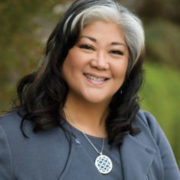
As the United States’ decennial population count is underway in the midst of the pandemic, one Filipina American is tasked with making sure California residents, particularly those that are the hardest-to-count, respond to the 2020 Census.
Going into July, the state’s self-response rate now stands at 63.2%, but Ditas Katague, director of the California Complete Count Committee, is continuing to urge communities across the state to submit their questionnaires to increase the percentage and achieve a complete count.
To date, California has allocated over $90 million for its census outreach efforts.
“With our percentage, we’re still outpacing the nation by a little bit. I like to stay in front of the national average, which is at 61.8%. It’s a huge achievement considering what we’re facing,” Katague told media during a recent virtual briefing. “But we still have a lot further to go.”
The census, which can be done by phone, online or mail, counts where individuals live as of April 1. Currently, the counties that are leading in responses are San Mateo, Contra Costa, Santa Clara, Marin, Orange and Ventura.
Katague — who served in the governor’s office of planning and research as director of the 2010 census and was chair of the Census Bureau’s national advisory committee on race, ethnic and other populations since 2015— credited the higher response rates this year to the longer time to plan outreach and the analysis of previous data to see what the structural barriers were that “prevent us from getting an accurate count and prevent our communities from being counted and seen.”
“I got to see the operations of the U.S. Census Bureau and how it’s designed and how it will continue to miss a lot of people of color,” she said, adding that children under five years old are another demographic at risk for being undercounted.
With California having the largest Filipino population in the country at over 1.6 million Filipinos, Katague reminded that the latest census will continue to divide more than $675 billion in federal funding and resources, from medical services to infrastructure projects, to communities. States lose approximately $2,000 per person each year for the 10 next years for those who are missed in the count.
It also is used to determine the number of seats each state gets in the House of Representatives and to draw legislative districts.
“It’s so important because it brings the fair share of our representation back to our communities. That’s why the census is so important, it brings money,” she said. “But most importantly as a Filipino American, it shows how we’re growing and to have the data and to not just lump us in with [Asian and Pacific Islanders].”
In Los Angeles County, which is the hardest-to-count city and county in California and where a majority of Fil-Ams in the state call home, the response rate from the demographic has been above average (64.7% of Tagalog speakers versus 57.4% for the entire county), as of mid-June.
However, an area that continues to fall below the average response rates includes Historic Filipinotown, due to factors like residents being foreign-born and not understanding the importance of the census or multiple families living in one household. (The 2020 Census is available in 12 languages, including Tagalog.)
“The key thing for our community is many households have multi-generations — living with lola or lolo and saying with them, or tita is staying over and then they’ll often see an undercount because they won’t report everyone. Maybe tita’s not supposed to be living there at that time or maybe they think they’ll get their own forms,” Katague said.
Among the reasons why many in the community are still not filling out their census forms is fear about what the data is going to be used for, despite the Census Bureau assuring that it is “safe and confidential.”
“I get the fear. Many of our hardest-to-count populations…our TNTs within the Filipino community are definitely like, ‘I’m not going to answer that.’ But I would tell them, it’s safe…and we need the data to understand the impact that Filipino Americans are having on a lot of different things,” Katague said.
Another excuse is being busy at work, as many Filipinos continue to be on the front lines as essential workers during the pandemic.
“It’s about knowing how many Filipinos are out there to really say that we’re a force and we need to represent…both positively and then if there are some negative impacts in terms of, you know, getting sick or not getting that funding to those communities,” she said, adding that other ways to get essential workers’ attention are by going to their places of work and bringing the importance of the census directly to them.
Under a pre-coronavirus schedule, those who had not filled out their forms by May would subsequently be visited at home by a census taker. However, the field operations have been postponed until August 11 for nonresponse follow-up and must conclude no later than October 31, according to the Census Bureau.
“We’ve seen systemic racism, we’ve seen these barriers that are out there because we haven’t been able to be seen and heard. We’ve had to work, unfortunately, through a system that has these barriers built in it. So agents of change, the census and voting, are definitely that foundation of getting folks to rise up, be heard and to participate,” Katague said.








It’s important to be counted! Congrats, Ditas, for the hard work you’re doing!
Ditas is my youngest daughter. My wife and I immigrated to US in 1959 to pursue my Ph.D in Pharmaceutical Chemistry at the University of Illinois from the Philippines. Both of us are now retired. My last job was with Food and Drug Administration as the Chemistry Team Leader from the Division of Anti-Infective Drug Products, Center of New Drugs.
My wife and I are very proud of Ditas accomplishments!-